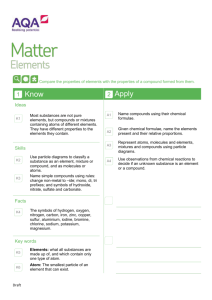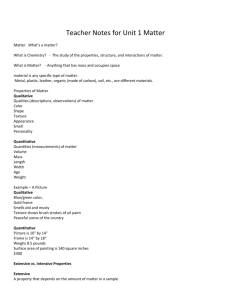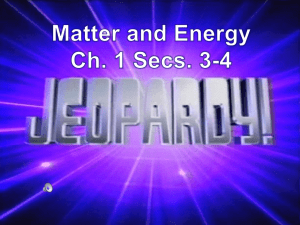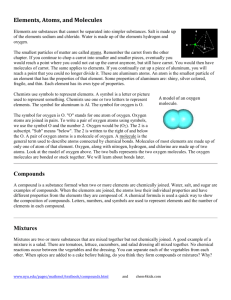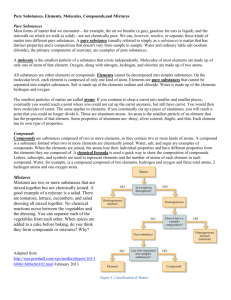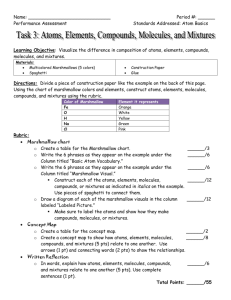Compounds, Elements, Atoms, Mixtures Reading
advertisement
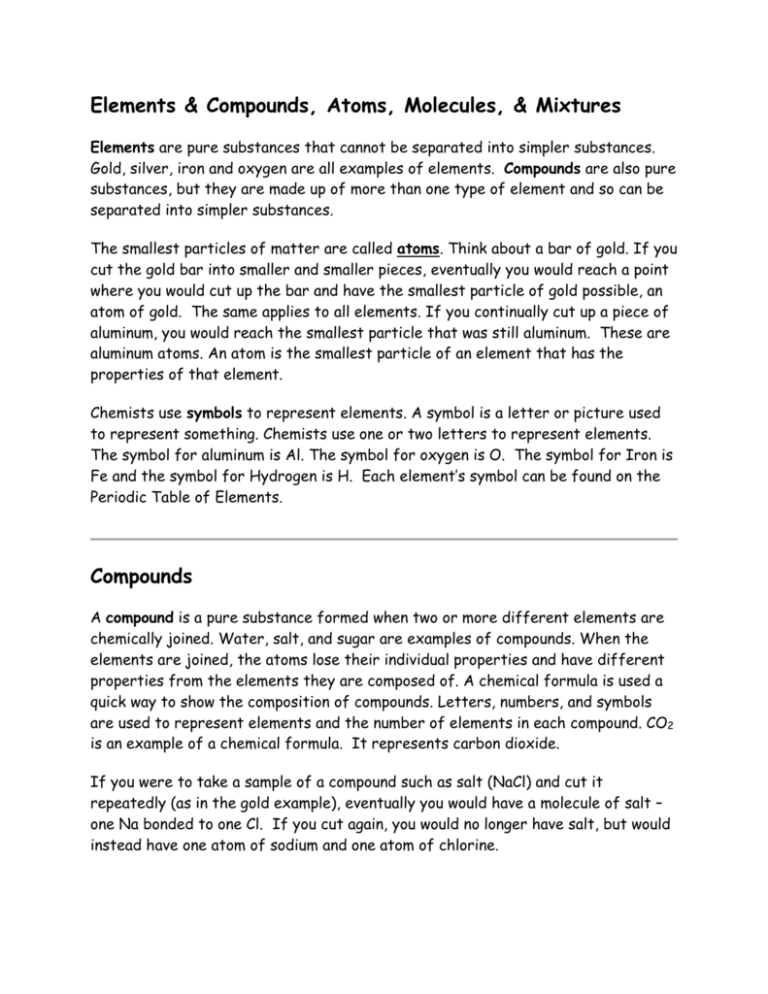
Elements & Compounds, Atoms, Molecules, & Mixtures Elements are pure substances that cannot be separated into simpler substances. Gold, silver, iron and oxygen are all examples of elements. Compounds are also pure substances, but they are made up of more than one type of element and so can be separated into simpler substances. The smallest particles of matter are called atoms. Think about a bar of gold. If you cut the gold bar into smaller and smaller pieces, eventually you would reach a point where you would cut up the bar and have the smallest particle of gold possible, an atom of gold. The same applies to all elements. If you continually cut up a piece of aluminum, you would reach the smallest particle that was still aluminum. These are aluminum atoms. An atom is the smallest particle of an element that has the properties of that element. Chemists use symbols to represent elements. A symbol is a letter or picture used to represent something. Chemists use one or two letters to represent elements. The symbol for aluminum is Al. The symbol for oxygen is O. The symbol for Iron is Fe and the symbol for Hydrogen is H. Each element’s symbol can be found on the Periodic Table of Elements. Compounds A compound is a pure substance formed when two or more different elements are chemically joined. Water, salt, and sugar are examples of compounds. When the elements are joined, the atoms lose their individual properties and have different properties from the elements they are composed of. A chemical formula is used a quick way to show the composition of compounds. Letters, numbers, and symbols are used to represent elements and the number of elements in each compound. CO2 is an example of a chemical formula. It represents carbon dioxide. If you were to take a sample of a compound such as salt (NaCl) and cut it repeatedly (as in the gold example), eventually you would have a molecule of salt – one Na bonded to one Cl. If you cut again, you would no longer have salt, but would instead have one atom of sodium and one atom of chlorine. Molecules Let’s take a closer look at molecules. A molecule is two or more atoms joined together chemically. All compounds contain two or more different elements bonded together, so all compounds are molecules. But, not all molecules are compounds. For example, oxygen atoms are often found joined together in pairs. To write a pair of oxygen atoms using symbols, we use the symbol O and the number 2. A pair of oxygen atoms A model of an oxygen molecule bonded together would be written as O2. The 2 is a subscript - "sub" means "below." A pair of oxygen atoms is a molecule of oxygen. Most elements are found with only one of atom of that element, but oxygen, along with nitrogen, hydrogen, and chlorine can be found in pairs of two atoms. Look at the model of oxygen. The two balls represent the two oxygen molecules. The oxygen molecules are bonded or stuck together. Mixtures Mixtures are two or more substances that are mixed together but not chemically joined. A good example of a mixture is a salad. There are tomatoes, lettuce, cucumbers, and salad dressing all mixed together. No chemical reactions occur between the vegetables and the dressing. You can separate each of the vegetables from each other. Mixtures can be made up of different elements, different compounds, or a combination of the two.

